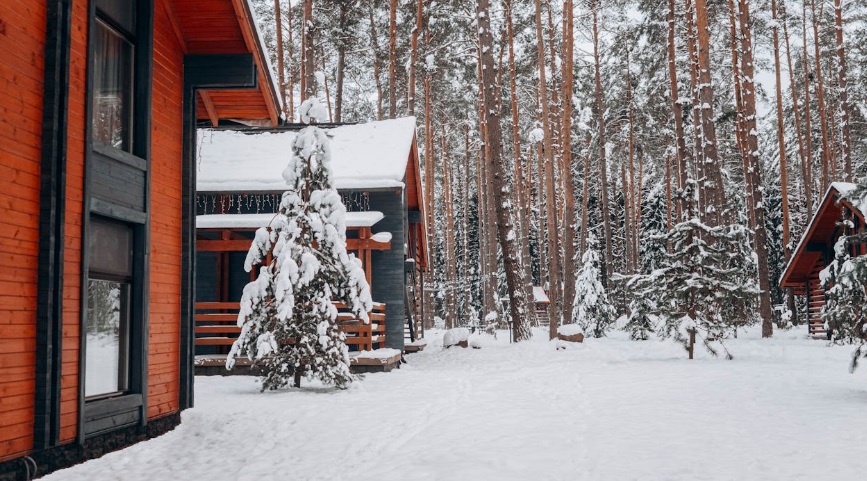It’s that time of the year again. Distant bells jingle, and your neighborhood supermarket is out with their ‘t’is the season’ decorations already. Festivities aside, the coming months also need preparation for high energy bills, a substantial problem for many homes in the US and Europe.
Recently, some media outlets reported that Britain’s home insulation program has performed poorly, leaving many households with inadequate and faulty heating. The BBC predicts rising energy prices when the new cap comes into effect for millions of households in the UK.
Besides reasons related to climate change and depleting gas reserves, political tensions between Russia and Ukraine are also affecting the global energy market.
While many factors are not in our control, there are a few updates you can prioritize to make your home more thermally efficient and save energy expenses.
1. Install Smart Windows and Doors
Since your windows and doors are obviously a major source of heat loss, why not rope them in to cut your energy bills?
Thanks to advanced thermal technologies, you can find windows that use low-emissivity coatings. These coatings minimize the heat transfer. The core concept is that you will use windows with multi-pane glass that will protect against heat loss but not darken the room.
While selecting the appropriate choice for your home, consider the ratio of light to solar gain, i.e., the visible light the window transmits and the solar radiation it admits inside. You will find the latter stated as the ‘Solar Heat Gain Coefficient.’
Besides static coatings, you can explore windows that truly exemplify their ‘smart’ label, showing dynamic adjustments based on the weather conditions. A 2025 study published in Applied Surface Science proposed a tungsten-doped vanadium dioxide coating for windows. This film can control thermal radiation in real-time, delivering energy savings and lowering carbon emissions.
While commercial installations of dynamic windows may be limited, we can start with simple steps. These could be closing windows and doors diligently and maximizing daylight use by avoiding artificial power sources whenever possible.
2. Tackle Thermal Bridging
Often, the hidden cause of higher energy bills is leakage we don’t know about in our house.
Many homes suffer from the problem of thermal bridging, which is an escape route for precious heat. Weak areas in your home’s insulation can facilitate a bridge between the inward and outward faces of the property. Some reports estimate that the heat loss through these bridges can be as high as 30 percent.
To deal with this challenge, it is advisable to ramp up the insulation. A reliable solution comes via thermal breaks that curtail energy flow through conductive components of your building. They directly deliver energy savings with a high return on the initial investment.
You can find these products in various materials, but not all are alike. According to Fabreeka, vinyl and plastics are not optimal for thermal insulation. Instead, polyurethane foam may be better at delivering results and also reducing corrosion.
A 2025 study published in Frontiers in Thermal Engineering agrees that future-ready thermal energy solutions must focus on material innovation, such as composites, and new directions of interdisciplinary research. These initiatives will be necessary to reduce energy pressures on our already resource-starved planet.
You can also prioritize the use of recycled materials, which will improve your home’s overall carbon footprint and sustainability.
3. Consider Alternative and Distributed Energy Options
Another approach to improving your home’s energy efficiency is reevaluating your heating choices.
Have you considered using electric heat pumps over conventional oil furnaces? The US Department of Energy observes that households using heat pumps will be less affected by higher heating costs. Now, that is certainly excellent news for this era of eternally rising living costs.
Of course, they involve a higher upfront cost, which can be an impediment. You can consider seeking federal tax credits for making energy-efficient choices. The IRS allows a $2,000 annual credit for qualified heat pumps and other products, such as biomass boilers.
A 2024 Deloitte report notes that distributed energy resources can transform households and make clean power budget-friendly. It finds that many households moving from traditional water heaters to heat pumps notice significant improvements in efficiency. Some homes are even positive-energy, i.e., they produce more energy than they use.
When attempting to ramp up your home’s energy efficiency, consider adopting a balanced approach. Many modern households spread out their energy usage across the grid, from electric vehicles for transport to solar panels for water heating. The underlying principle is to consume less non-renewable energy, which is often financially lucrative over time.
Before this winter sets in, in its full glory, consider making some of these upgrades to prepare your home. Energy bills can take up considerable budget space in the winter months, but thoughtful interventions can help you manage expenses better.
It is also a good idea to schedule a professional home inspection to identify possible problems, such as a faulty HVAC system or gaps in your insulation. Fixing problems after they have created havoc is far more draining and expensive.

